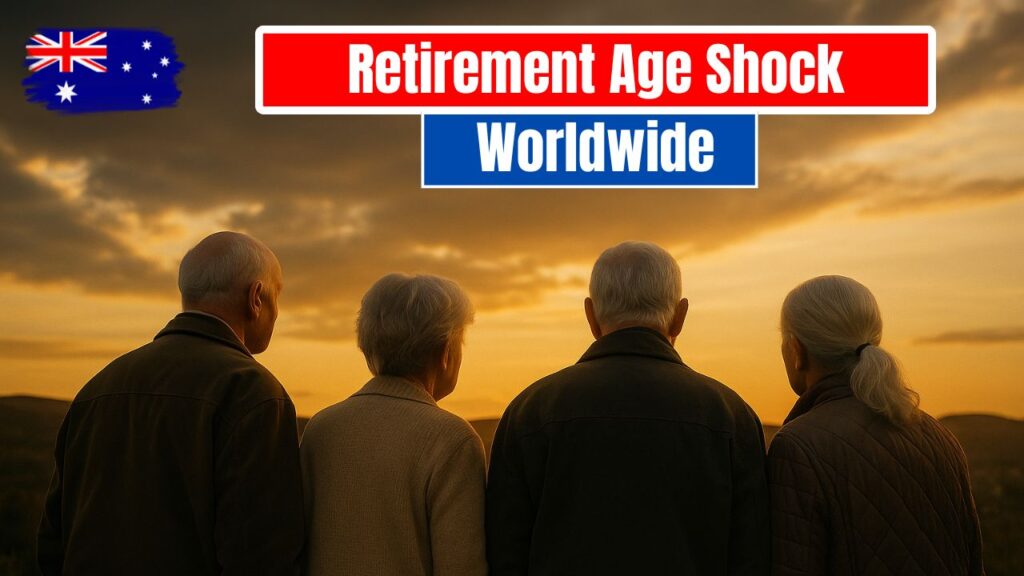Australia Retirement Age – The announcement of a new pension age across Australia, Canada, and the United States has created major discussions among workers, retirees, and policymakers. As these three countries move away from the long-standing retirement age of 67, millions of citizens are now seeking clarity on how the new age rules will impact their future financial planning. This change reflects shifting demographics, longer life expectancy, and the need to strengthen long-term pension sustainability. In this article, we break down the updated pension age, compare the changes across the three countries, and explain what individuals must understand before planning their retirement.

New Pension Age Reform for Australian Citizens
The latest pension age reform announced for Australian citizens marks a significant shift in the nation’s retirement landscape. Australia has long operated with a gradual increase in the Age Pension eligibility age, but the new rule officially replaces the previous benchmark of 67 with a newly adjusted pension age designed to match the country’s evolving demographic needs. This new approach aims to ease pressure on the Australian government’s social security system while encouraging older Australians to participate in the workforce longer. For workers planning retirement, understanding the new eligibility timelines, income thresholds, and payment structures becomes essential as these revised rules begin rolling out nationwide.
Retirement Age Adjustment for Canadian Seniors
The retirement age adjustment for Canadian seniors brings major changes to how individuals will qualify for the Old Age Security (OAS) and Canada Pension Plan (CPP) benefits in the coming years. Canada, like many developed nations, is facing demographic shifts driven by an aging population and longer life expectancy. As a result, policymakers have confirmed a new pension age to replace the traditional threshold of 67, ensuring that programs remain financially sustainable. Canadian residents planning for retirement will need to pay close attention to the updated eligibility rules, the revised contribution period, and how the new age settings may affect early or delayed pension claiming strategies.
| Country | Old Pension Age | New Pension Age | Implementation Year | Key Impact |
|---|---|---|---|---|
| Australia | 67 | New adjusted age | 2025–2026 | Longer workforce participation |
| Canada | 67 | New adjusted age | 2025 | CPP & OAS sustainability |
| United States | 67 | New adjusted age | 2026 | Changes to Social Security |
| All Countries | 67 | Higher unified age | 2025–2026 | Reduced pension strain |
Revised Social Security Age for U.S. Individuals
The United States has officially confirmed significant changes to the Social Security full retirement age, bringing adjustments that will directly influence millions of individuals planning retirement. Moving beyond the previous standard of 67, the updated age reflects the U.S. government’s efforts to maintain long-term stability within the Social Security trust funds. Americans will now need to review how the new age affects early retirement, delayed credits, and overall benefit calculations. With the U.S. facing rapid population aging and changing workforce dynamics, this reform aims to create a stronger system for future retirees while encouraging financial preparedness among individuals of all ages.
Pension Eligibility Changes for North American Workers
The newly updated pension eligibility changes for North American workers highlight a coordinated effort across Canada and the United States to modernize retirement frameworks. These reforms prioritize long-term sustainability, ensuring that both government-backed pension systems remain strong for future generations. Workers in these countries must now consider how the extended retirement age affects their savings plans, employer contributions, and long-term financial stability. With both nations experiencing similar economic and demographic pressures, these shifts underscore the growing need for individuals to adapt their retirement strategies, increase personal savings, and understand how pension rules may evolve further in the coming years.
Frequently Asked Questions (FAQs)
1. What is the new pension age in these three countries?
The new pension age is higher than the previous 67 and varies slightly across Australia, Canada, and the U.S.
2. Why are governments increasing the retirement age?
The change is due to longer life expectancy and the need to maintain pension system sustainability.
3. Will early retirement still be available under the new rules?
Yes, but early retirees may receive reduced monthly benefits depending on the country.
4. When will the new pension age take effect?
Implementation begins between 2025 and 2026 depending on the country’s specific policy timeline.




